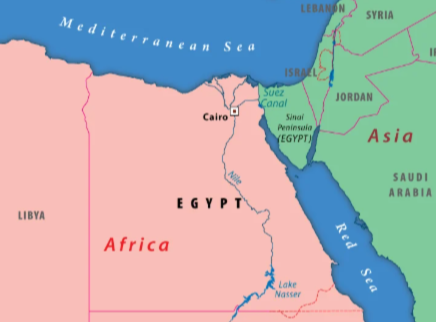
After asking many adults: “What are the seven continents?”, a question that should be simple, I received various answers. For the most part, everyone got the basics: North America, South America, Europe, Africa, and Asia. The last two are what confuses people the most. One is Antarctica, which is easily forgotten due to its remoteness and lack of media coverage. The last one is the most confusing. However, before we get into the often-overlooked continent, we need to define what a continent is.
What is a continent?
A simple definition of the word continent is a land mass. Each well-known continent has distinct land, some separated by sea or a tiny piece of land. South America is connected to North America, through Panama. However, this linkage is small and not wide enough for North and South America to be considered one single continent. This is also the case with Africa and Asia. The miniscule portion of Egypt that appears to connect Asia and Africa is not big enough to consider Africa and Asia as one. However, this distinction is not true for Europe and Asia. Europe and Asia are often referred to as Eurasia since there is no clear dividing factor between the two.
However, the problem with the Eurasian continent is Russia. Eurasia’s land is too expensive, and the connecting portion is the country of Russia. Russia is present in both the European and Asian continents and which continent it truly belongs to is often left to opinion. In history, Russia absorbed more Western European influences than Asian. Due to its European ties and European culture historically, Russia is commonly perceived as European. All of Russia’s cities lie on the Western side, so most of the population and governments lie closer to Europe.


Australia vs. Oceania
There is confusion on whether the South Pacific continent is called Australia or Oceania. To put it simply, the continent is named Australia. As said before continents are land masses, and the only large and significant land mass in the South Pacific region is Australia. For that reason, and there being no other countries to rival this name, it is called Australia while Oceania is the region. This region of Oceania includes all the Pacific islands and New Zealand as well as Australia. Oceania is not a continent because it is not a large land mass, instead, it is a collection of land masses. The islands are not a part of the land mass, so they lack a continent. This does not mean the islands are excluded, continent is just a term to name all the large bodies of land.
An example to understand this more clearly is found through the differences between oceans and inland seas or lakes. Oceans represent the continents while seas or lakes represent the islands. Inland seas or lakes are not part of any ocean; they are their own separate body of water. Similarly, the islands are their own separate body of land, just not large enough to be called a continent.

Other Islands?
The Caribbean is another point that has led to much confusion. For the same reason as the Pacific Islands, the Caribbean does not belong to any continent.

Despite this, the proximity and cultural association with countries in the continent make the Caribbean islands culturally a part of North America. Analyzing the Carribean’s cultural association with North America doesn’t directly apply to the definition of a continent, so technically the Caribbean is not part of North America. This idea also applies to any other small bodies of land. Cultural ties exist elsewhere, making various countries culturally part of a continent. As previously mentioned an example is Russia’s association with Europe. Another example is seen through the UK and Ireland, which are not literally part of the European landmass. They are both islands but due to proximity and connection, they’re basically a part of Europe.
Finally, another point of confusion resides in Central America. Central America is a region that is inside of the North American continent. It is not its own landmass, it’s not separated from North America. The same applies to the Middle East, which is a region inside of the continent of Asia. There is no single separation, and the Arabian Peninsula is not large enough to become its own continent.







